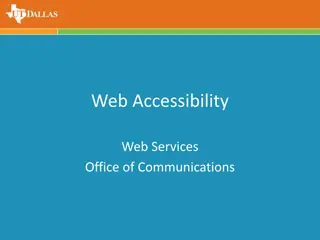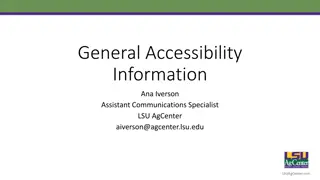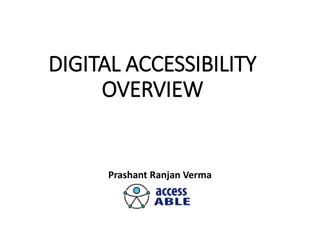Enhancing Accessibility with Eyeball Tracking Technology for Persons with Disabilities
This project from Islington College addresses the challenges faced by persons with disabilities in using laptops and desktops. By introducing an innovative alternative to traditional mouse input through eyeball tracking technology, they aim to improve the accessibility of computer devices for physically challenged individuals. The solution simplifies the interaction with technology and enhances the inclusivity of ICTs for all users.
Download Presentation

Please find below an Image/Link to download the presentation.
The content on the website is provided AS IS for your information and personal use only. It may not be sold, licensed, or shared on other websites without obtaining consent from the author. Download presentation by click this link. If you encounter any issues during the download, it is possible that the publisher has removed the file from their server.
E N D
Presentation Transcript
Accessible and inclusive ICTs for persons with disabilities ISLINGTON COLLEGE Basanta Shah Bini Shrestha Dipen Singh Siddhartha Sapkota
Physically Challenged A physical disability is a limitation on a person's physical functioning, mobility, dexterity or stamina. Other physical disabilities include impairments which limit other facets of daily living, such as respiratory disorders, blindness, epilepsy and sleep disorders.
Problem faced by physically challenged people One of the problem faced by the PWDs are difficulty in using laptops or desktops.
Our Solution In order to make the use of laptops and computer easier to access our team have came up with an idea of creating an alternative for mouse. This technology is called eyeball tracking. It records an eye position and movement on 2D screen. People no longer will need to use mouse and it is easier for physically challenged people to use computer devices more easily.























